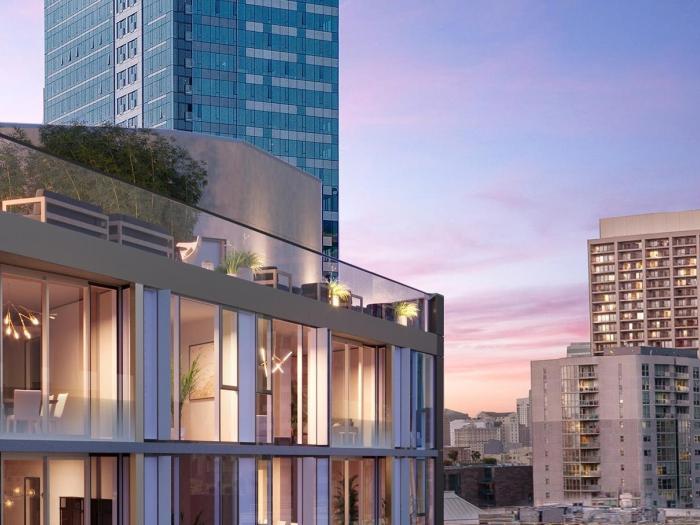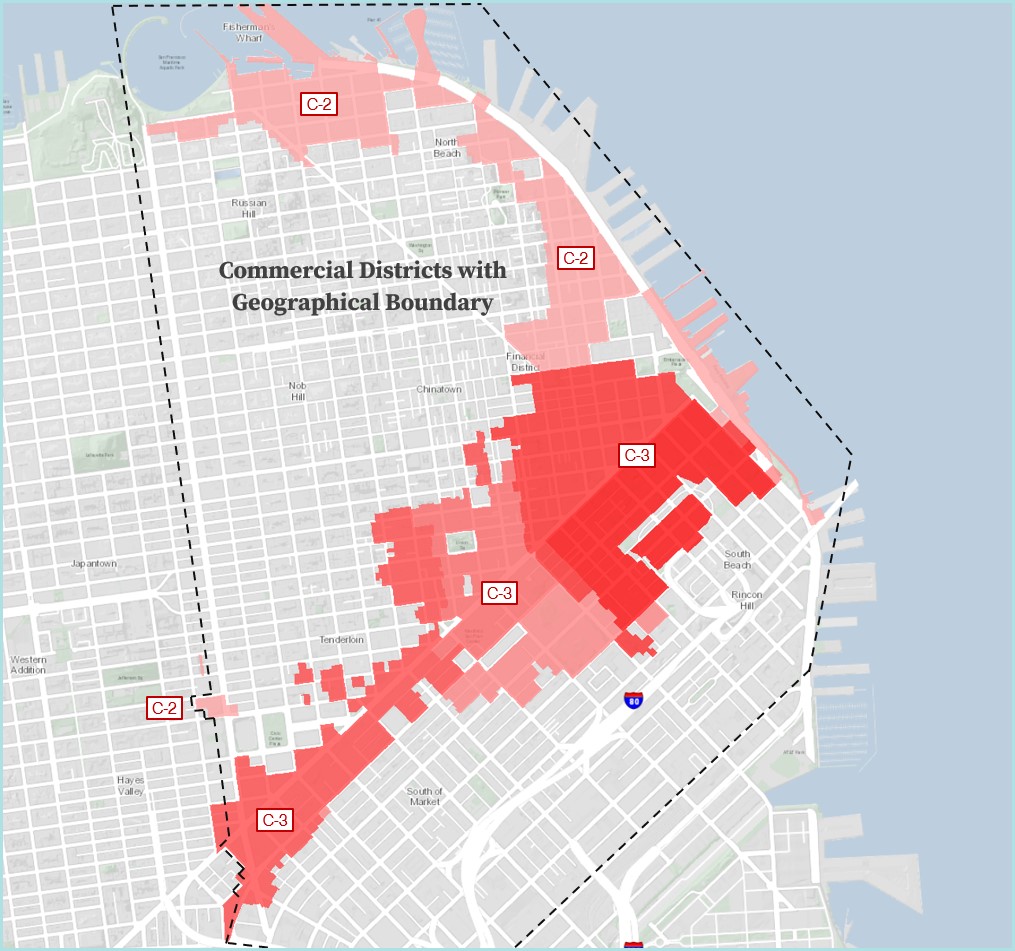
Downtown Adaptive Reuse Program
Part of the Future of Downtown initiative
In July 2023, the City of San Francisco established a new Commercial to Residential Adaptive Reuse Program. In accordance with the Roadmap to San Francisco’s Future, the program is intended to facilitate the expansion of housing downtown by waiving certain Planning Code requirements.
Announcement: Our new Adaptive Reuse Program brochure is now available for download. Learn the benefits of the program and share it with your community!
Office to housing conversion is one potential tool to help create more housing and diversify land uses and activities downtown.
New legislation passed July 2023 aims to reduce the regulatory barriers to make it easier to convert underutilized office buildings into housing. The Commercial to Residential Adaptive Reuse Program is described on this page.
Not all buildings are suitable or economically feasible for adaptive reuse. As part of ongoing efforts to improve the feasibility of adaptive reuse projects, San Francisco voters approved Measure C on the March 2024 ballot. The City’s transfer tax is now waived on the first transfer of a property after a conversion from commercial to residential use. The exemption is limited to the first 5 million square feet of converted space, and to projects that receive Planning Department approval before January 1, 2030 and then receive a first construction document within three years. In March 2025, the City passed legislation which waives the inclusionary housing requirement and impact fees for eligible adaptive reuse projects.
Definition
Commercial to Residential Adaptive Reuse shall mean to change the use of an existing Gross Floor Area from a non-residential use, other than a hotel use, to a residential use pursuant to Section 210.5.
Eligibility
To be eligible for the Commercial to Residential Adaptive Reuse Program a project must:
- Located in C-3 zoning district or C-2 zoning district that is east of or fronting Franklin Street/13th Street and north of Townsend Street
and - Not seek approval under Section 206.5 or 206.6. (State Density Bonus)
Planning Code Waivers
Projects which meet the eligibility criteria, could receive zoning modifications (or waivers) from some Planning Code requirements:
- Lot coverage (Sec. 134)
- Open space (Sec. 135)
- Streetscape and pedestrian improvements (Sec. 138.1)
- Dwelling Unit Exposure (Sec. 140)
- Bike parking (Sec. 155.1)
- Dwelling unit mix (Sec. 207.7)
- Live Work and Intermediate Length Occupancy uses would be permitted.
- Transportation Demand Management (TDM) Plan Requirements (Sec. 169)
- Off-street loading (Sec. 152 and 152.1)
- Protected Pedestrian, Cycling, and Transit-Oriented Street Frontages (Sec. 155 (r))
- Planning Commission Hearing (Sec. 309)
- POPOS required per Section 210.5

The Planning Code waivers can also apply to an expansion of the building. A project may add up to 33% additional volume. The waivers could be applicable to both the existing building and the expansion.
Building Code Provisions
The San Francisco Department of Building Inspection (DBI) has outlined pertinent code provisions and possible code exceptions to facilitate adaptive reuse projects. In September 2024, DBI published the Commercial-to-Residential Adaptive Reuse Information Sheet which clarifies Building and Fire Code requirements and alternative methods of compliance for adaptive reuse projects. View the Office to Residential resource guide.
State Programs
Commercial to Residential Adaptive Reuse Program projects may be eligible for various State ministerial programs provided that all of the eligibility criteria are met. Please see the Ministerial Programs website for additional information. State ministerial program projects must be code-complying. Although Commercial to Residential Adaptive Reuse Program projects may not take advantage of State Density Program, relief from Planning Code requirements are available by use of specific Planning Code waivers included in this program. A Commercial to Residential Adaptive Reuse Program project that requests waivers as specified in this program may still be considered code-complying.
- Downtown Adaptive Reuse Brochure, March 2025
- Planning and Building Codes - Commercial to Residential Adaptive Reuse and Downtown Economic Revitalization, Ordinance 122-23
- Department of Building Inspection (DBI), Adaptive Reuse Information Sheet and Resource Guide
- Downtown Revitalization, A ULI Advisory Services Panel Report, ULI, October 2023
- From Workspace to Homespace, SPUR, October 2023
- Mayor’s Roadmap to San Francisco’s Future
Lily Langlois
Principal Planner
lily.langlois@sfgov.org

